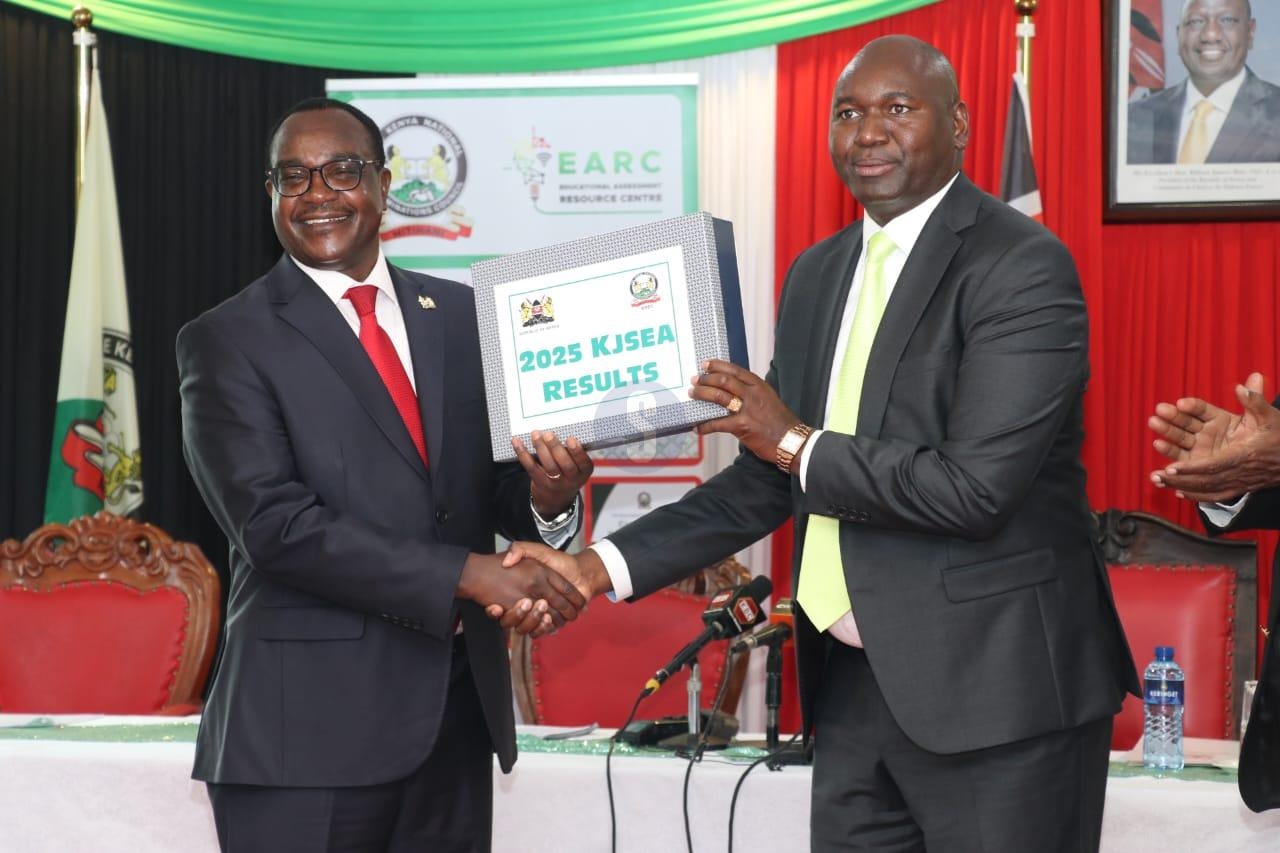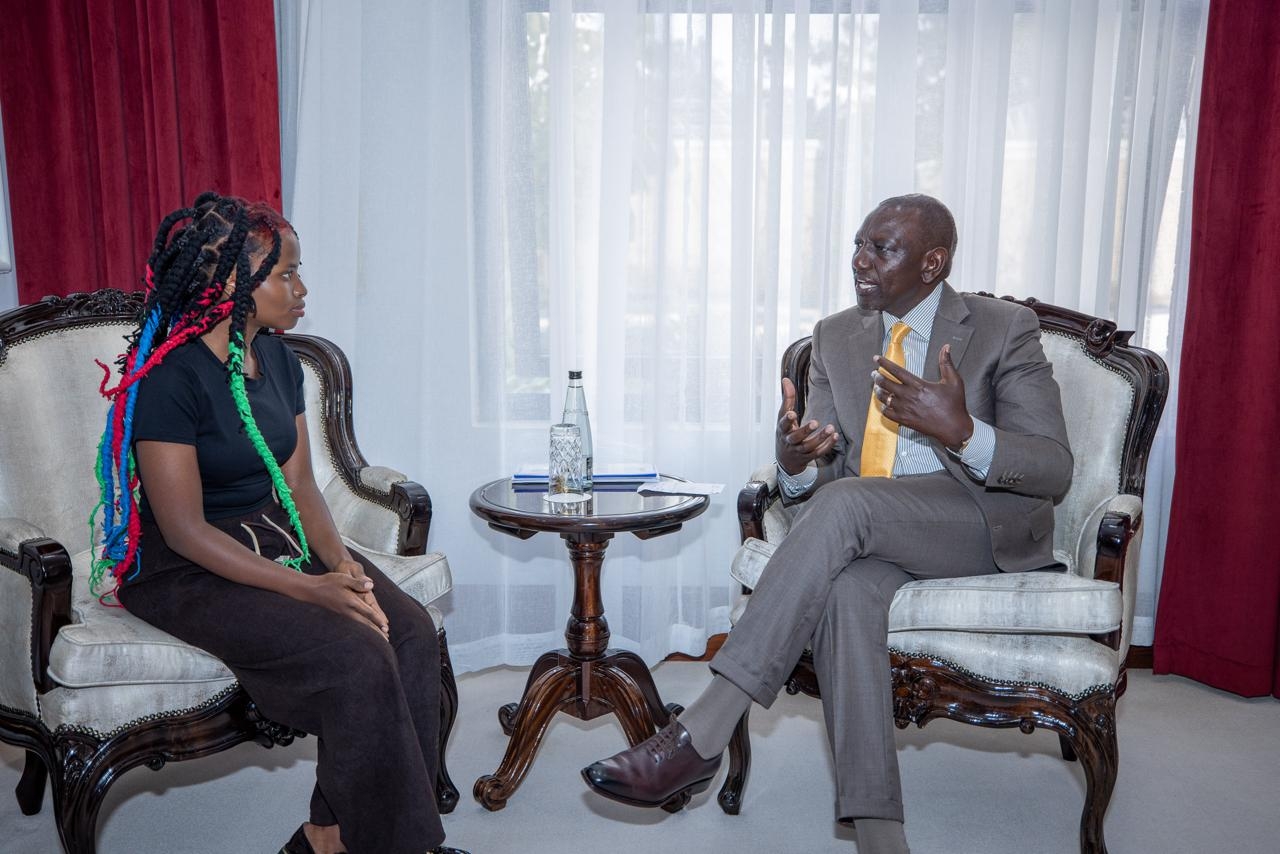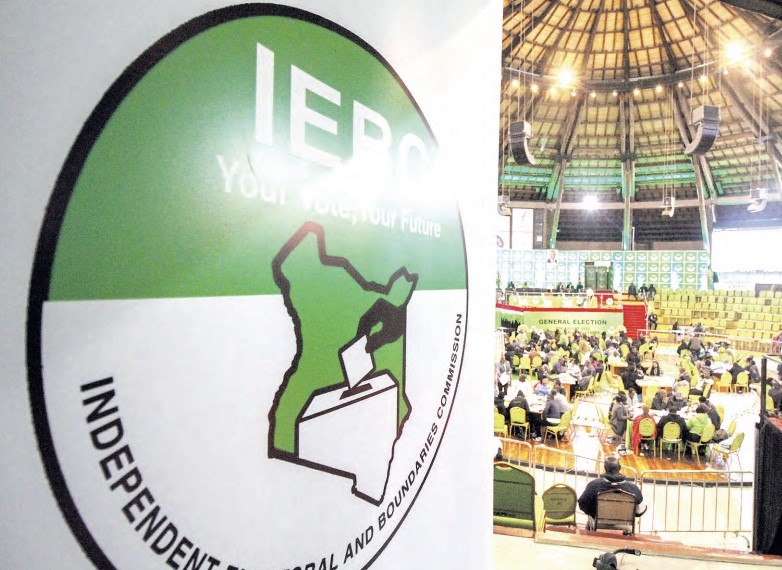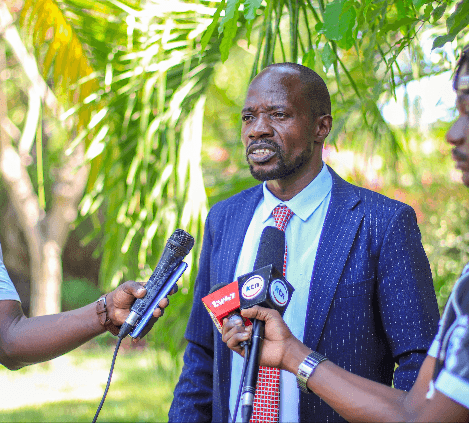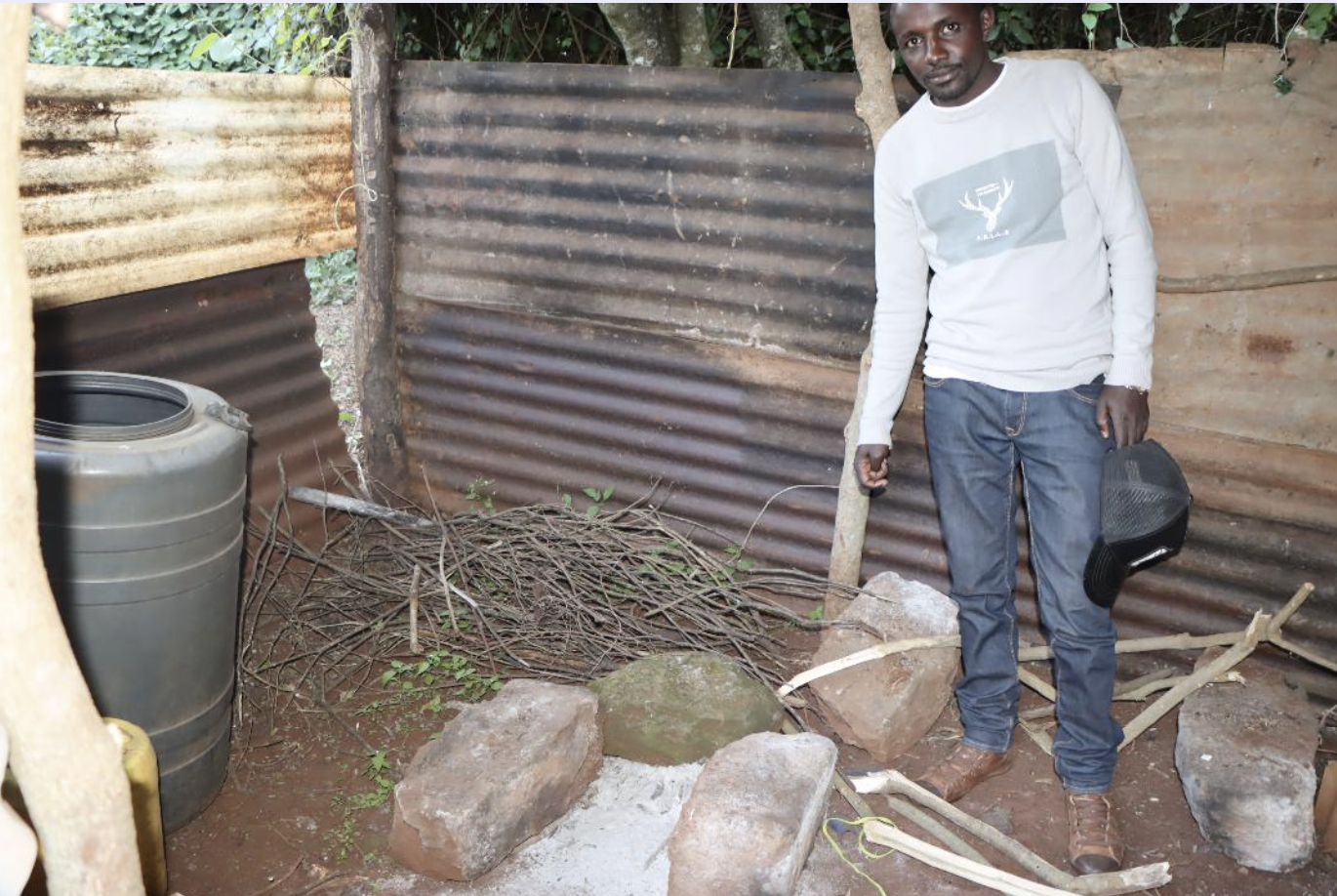 A view of a fireplace that relies on two or three stones. It is biomass-intensive and linked to indoor air pollution. Photo/ Roisa Kerry
A view of a fireplace that relies on two or three stones. It is biomass-intensive and linked to indoor air pollution. Photo/ Roisa KerryThe late afternoon sun spills over the hills of Ngong in Kajiado County, painting the sky in hues of amber and rose. In a tin-roofed home in Nalepo, 36-year-old Mary Naserian crouches over a three-stone fire. Smoke curls around her, stinging her eyes as she fans the flames beneath a pot of maize and beans.
The acrid haze clings to her hair, her clothes, and her lungs. “My mother cooked like this, my grandmother too,” she says. “We never thought the smoke could kill us.” For Mary, and thousands of people like her in Kibiko and Nalepo, cooking is not only about feeding a family. It is survival, tradition and community. But it comes at a cost: the hidden danger of indoor air pollution is a silent, daily assault on health.
Indoor air pollution is one of the world’s least discussed but deadliest health risks. According to the World Health Organization (WHO), it causes 3.2 million premature deaths every year, mainly from pneumonia, chronic obstructive pulmonary disease (COPD), heart disease, and lung cancer.
The culprit is familiar: household use of solid fuels such as wood, charcoal, dung, and crop residues, burned in open fires or inefficient stoves. Globally, nearly 2.3 billion people are exposed daily. In Kenya, about 70% of households still cook with these fuels, according to the Ministry of Health’s Kenya Health Sector Strategic and Investment Plan (KHSSP) Mid-Term Review Statistical Report.. In rural and peri-urban communities like Kibiko and Nalepo, kitchens are often poorly ventilated. The smoke levels inside can reach 10 times higher than the WHO’s recommended safe limits for fine particulate matter (PM2.5). Kajiado County records respiratory diseases as among the top outpatient cases.
Kenya Medical Research Institute (KEMRI) scientists have linked prolonged smoke exposure to heightened risks of acute respiratory infections in children and chronic respiratory disease in adults. Wesley Mochama, a nurse at Oletepes Health Centre, sees the toll daily, he says: “Children come in with persistent coughs and wheezing. Mothers suffer from headaches and burning eyes. Almost every time, the root cause is the same — smoky kitchens.”
Indoor air pollution is not an equal-opportunity killer. Women and children bear the heaviest burden. Women like Mary spend long hours each day tending fires in kitchens that double as smoke chambers. Children, often strapped to their mothers’ backs or playing nearby, breathe in the same toxic air. Studies show children under five are at the highest risk of pneumonia from indoor smoke. The economic burden is also gendered. Women lose time collecting fuel, and families spend money on hospital visits that could have been prevented. The energy poverty trapping women in smoky kitchens also perpetuates cycles of poor health, missed school days for children, and lost productivity for families.
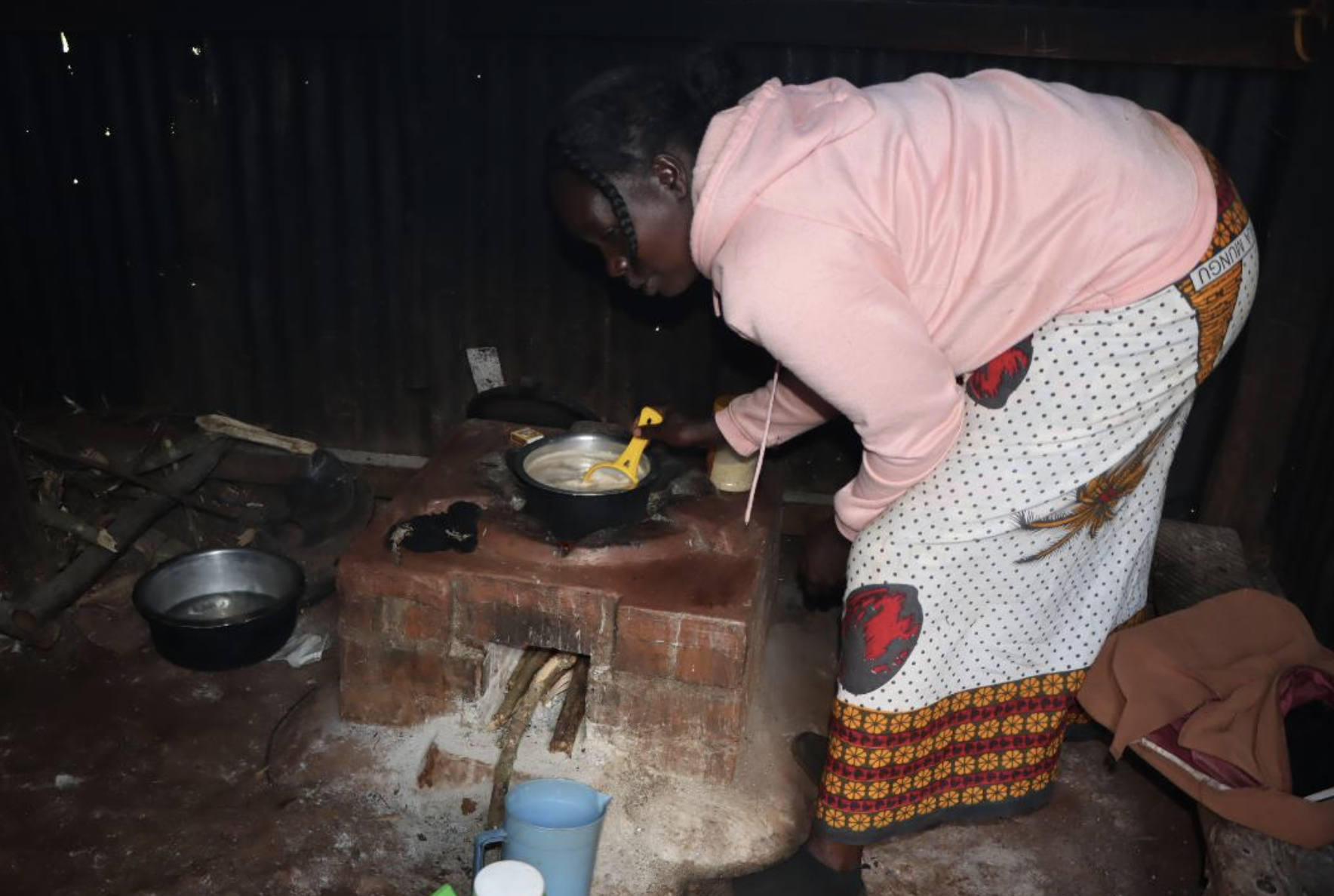 Mary Naserian is using her newly-installed cookstove, which is energy efficient. Photo/ Roisa Kerry.
Mary Naserian is using her newly-installed cookstove, which is energy efficient. Photo/ Roisa Kerry.Despite the risks, a slow transformation is underway in Kibiko and Nalepo. A handful of households have shifted from three-stone fires to improved clean cooking stoves , a simple innovations that burn fuel more efficiently and produce far less smoke. The difference is visible: kitchens once blackened by soot now have clearer walls, mothers no longer cook with streaming eyes, and children cough less. Families are also saving money on firewood. Yet adoption remains stubbornly low.
A 2022 GIZ survey found that while 82% of households had heard about improved stoves, only 23% were using them regularly.
The barriers are complex: affordability, durability concerns, and cultural habits. For staple foods like ugali and githeri, many believe only a three-stone fire achieves the right taste and consistency. Mary herself hesitates: “If I could get one on credit, I’d try. But paying at once is impossible.”
The crisis of indoor air pollution is preventable. Solutions already exist, and some are proving effective.
According to the experts from the Ministry of Energy and GIZ Kenya, some of the solutions include Subsidies and Microfinance; saccos and women’s groups. These affordable financing options can make stoves accessible through pay-as-you-go models, loans, or community savings groups.
The women of Kibiko and Nalepo represent millions of people worldwide still cooking in smoky kitchens. In Kenya, tackling indoor air pollution aligns with national health goals, environmental sustainability, and gender equity. For the world, it contributes to climate commitments and the Sustainable Development Goals. It is also a question of justice. Why should women like Mary pay with their lungs to put food on the table?
Back in Nalepo, Mary lifts her pot off the fire, eyes watering. A neighbour tells her about her new stove and how her kitchen is now smoke-free. Mary dreams of the same relief. “The smoke has always been part of our lives,” she says softly. “But maybe it doesn’t have to be.”
Mary listens as her neighbour shares her experience with an improved cookstove purchased through a local women’s savings group. It was a basic model — a rocket stove — priced at Sh2,500, paid in three instalments over three months.
“Her kitchen has no black soot anymore,” Mary observes. “She said her firewood now lasts twice as long.”
Encouraged, Mary joined the Naserian Women Group, a community-based organization that partners with GIZ Kenya and the Clean Cooking Alliance to distribute affordable stoves and make briquettes from farm waste. Through a pay-as-you-go model, Mary received her own improved stove within weeks.
“It felt strange at first. But my eyes don’t sting anymore, and my children stopped coughing at night,” she says. “I use half the firewood now — and spend less time gathering it.”
The clean cookstove isn’t just a metal object — it’s a tool of empowerment, a health intervention, and an economic equaliser. Women save time, protect their health, and gain control over household energy decisions.
But for this transformation to reach everyone, barriers like cost, credit access, and cultural beliefs must be addressed.
The final flame of the three-stone fire in homes like Mary’s isn’t just about technology. It’s about justice, dignity, and the right to breathe clean air.
Across Kenya, energy access is a tale of inequality. Urban households increasingly adopt LPG and electricity for cooking, while rural and peri-urban communities continue to rely on biomass fuels—wood, charcoal, cow dung. This split has created a class divide in kitchen air quality and health.
According to the Ministry of Energy’s Bioenergy Strategy (2021–2027), more than 70 per cent of Kenyans still depend on solid fuels, and only a small percentage of rural households have transitioned to modern cooking solutions. The government’s goal is to reach universal access to clean cooking by 2030, but progress is slow, hampered by cost, infrastructure gaps, and cultural resistance.
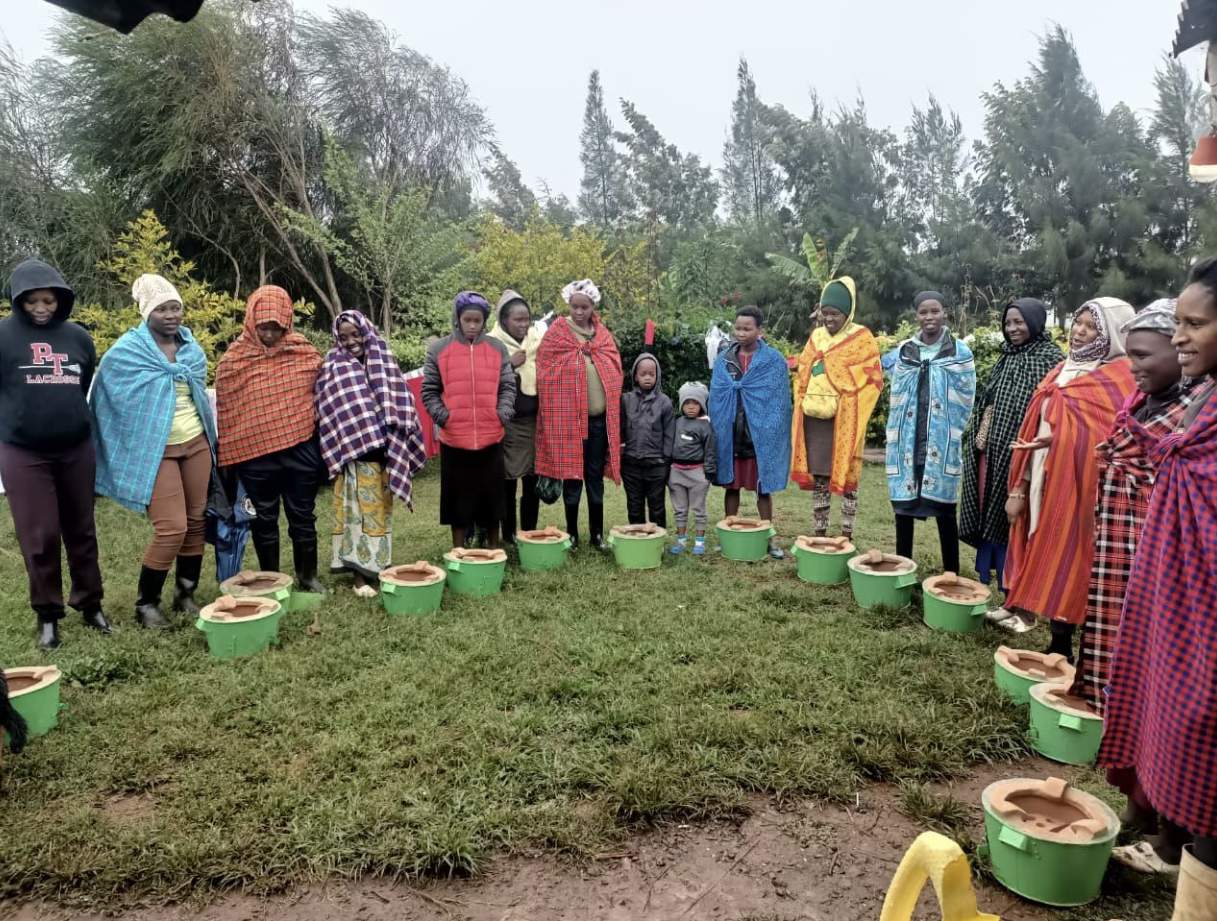 Members of the Naserian women's group display new energy-efficient Jikos. Photo/ Roisa Kerry.
Members of the Naserian women's group display new energy-efficient Jikos. Photo/ Roisa Kerry.The German development agency GIZ has emerged as one of the most influential players in Kenya’s clean cooking sector, blending policy support, financing models, and grassroots entrepreneurship. Through its flagship Energising Development (EnDev) programme, GIZ has worked with local partners to promote access to clean stoves and fuels in hard-to-reach rural areas, where smoky three-stone fires remain the norm.
According to Ezekiel Moseri, a clean energy expert with GIZ Kenya, the agency’s approach goes beyond distributing stoves. “We are tackling the last-mile challenge by supporting community distributors, piloting pay-as-you-go models, and helping households access financing through SACCOs and savings groups,” he explains.
GIZ has also flagged off last-mile entrepreneurship projects, training women and youth to become clean energy champions and distributors in their villages. These initiatives are supported by innovative financing tools such as results-based financing (RBF), carbon credit schemes, and partnerships with county governments.
At the policy level, GIZ provides technical advice to the Ministry of Energy and supports Kenya’s participation in global climate initiatives. “Clean cooking is not just about health—it’s about livelihoods, dignity, and climate resilience,” Moseri says.
Kenya is not alone in tackling smoky kitchens. In Ethiopia, a World Bank–backed programme has supplied improved stoves to more than 10 million households (World Bank, 2020).
Closer to home, Kenya’s Ministry of Energy and Petroleum in 2017 launched the National LPG Expansion Program (the “Mwananchi Gas Project”), aiming to give free six kilogramme gas cylinders and burners to low-income families—a bold recognition that clean cooking is both a health and energy imperative.
GIZ also, through its EnDev programme, has issued calls for last-mile entrepreneurs, local businesses, to distribute stoves and solar solutions in remote areas.
Kenya’s path to clean cooking must be multi-layered: stronger political will, better financing options, public-private partnerships, and grassroots innovation. Local women’s groups like Naserian are already leading the way—making fuel briquettes, demonstrating clean stoves, and organizing group purchases.
The writer is a public health specialist


